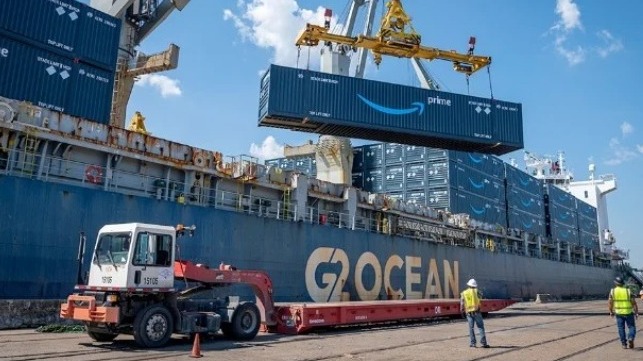How Retailers are Redesigning Supply Chains to Avoid Disruption

A century ago, at the tail end of World War One, a devastating pandemic swept across the world. However, it had relatively little impact on shipping and trade - unlike the deep supply chain disruption caused by the COVID-19 pandemic.
Why didn’t the post-WWI period suffer chronic cargo backlogs? It was a different era, with lower trade volumes, but the big difference between then and now is the rise of Just-in-Time (JIT) logistics. In 1918, no one was expecting their delivery just in time. Wholesalers, manufacturers and retailers maintained a sufficient buffer for the world’s supply chains.
The cargo backlog at the twin ports of Los Angeles and Long Beach is a testament to the fragility of today’s global JIT supply chain. It also points to the challenges for local actors to work together and fix supply-chain bottlenecks. Ryan Petersen, CEO of the forwarder Flexport, recently deconstructed the port congestion at LA/Long Beach after a visit to the terminals.
“If the bottleneck appears somewhere that you didn’t choose it, you aren’t running an operation. It’s running you. You should always choose the most capital-intensive part of the line to be your bottleneck. In a port that’s the ship-to-shore cranes. The cranes should never be unable to run because they’re waiting for another part of the operation to catch up. The bottleneck right now is not the cranes. It’s the yard space at the container terminals. And it’s empty chassis to come clear those containers out. In operations, when a bottleneck appears somewhere that you didn’t design for it to appear, you must overwhelm the bottleneck,” wrote Petersen.
Petersen went on to recommend that it is largely up to government leadership - federal and state - to solve LA/Long Beach port congestion. The city of Long Beach, California has already relaxed zoning rules allowing stacks of up to four containers to ease storage crisis. Other solutions that Petersen gave include bringing every container chassis owned by the National Guard and the military anywhere in the US to the ports, and loan them out to the terminals for 180 days.
However, due to the vastness of supply chains, local interventions may not move the needle much, thus requiring a more holistic intervention.
In this era of outsourcing, it takes multiple factories based on different continents to create a final product. Essentially, the need to find the least costly way to make and deliver goods drove the decision to organize economic activity in this manner. It is the opposite of vertical integration, where a company controls and owns virtually every part of the production process. A case in point is the Ford Motor Company: in the 1920s it owned forests, mines, rubber plantations, steel rolling mills and transport infrastructure such as railroads to transport its products. Under this model, a manufacturer could manage distribution risks by controlling supply chains directly.
Vertical integration would fall out of favor in 1980s as it became apparent that sourcing parts in-house was even more expensive than buying from suppliers. Outsourcing became a fashion, and many companies switched to an “asset-light” business model by contracting out important work.
However, this business model would also create new risks that many international retailers had not fully grasped. The fact that a chip manufacturer in South Korea can affect manufacturing of laptops and vehicles worldwide is a testament to these new risks.
How can retailers create flexible supply chains to skirt disruption risks?
Amazon has solved this question by reorganizing its shipping and warehouse networks in such a manner that if a disruption occurs in U.S West Coast, it can easily reroute its imports from China via the East Coast.
In a new paper, researchers Thomas Holmes and Ethan Singer describe Amazon and Walmart’s shipping models, which are designed to anticipate disruptions in supply chains.
Walmart, for example, has built an import distribution center near Houston, designed to face both West and South. It can receive goods from China either via rails from California ports, or via containers aboard vessels passing through Panama Canal and unloading at the Port of Houston.
Crocs Company also seems to have adopted a similar approach. Despite the global supply chain snarls, Crocs has exceeded its third-quarter earnings and sales, beating Wall Street estimates. Consequently, it has hiked its full-year revenue outlook, news that made the company’s stock to soar by seven percent last week.
In an earnings call last week, Crocs CEO Andrew Rees explained that the success is partly a result of the company’s ability to minimize supply chain hurdles. “Our shoes are really simple to make, and so swapping factories can be very, very quick. The classic clog has three components, two of which are made on site, so you do not have a lot of external logistics to be able to get started. We think we’re competent in terms of rapid manufacturing,” Rees explained.
The company indicated that it is building a larger presence along the US East Coast to avoid the massive cargo logjams on the West Coast.
The opinions expressed herein are the author's and not necessarily those of The Maritime Executive.
